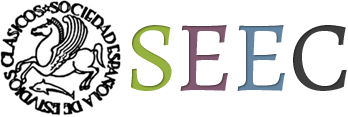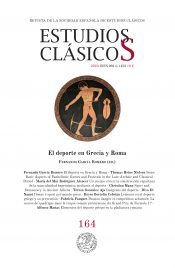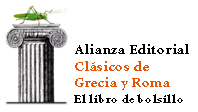Un cuerpo cívico: la construcción espartana de la masculinidad hegemónica mediante el deporteA civic body: Spartan construction of hegemonic masculinity through sport
María del Mar Rodríguez Alcocer
Grupo de Investigación Eschatia
Resumen
El presente trabajo analiza cómo las prácticas deportivas contribuyeron a construir un modelo estereotipado de ciudadano espartano al que se situó en la parte más alta de la jerarquía de género. Para ello, se ha utilizado el concepto de masculinidad hegemónica propuesto por Connell y Messerschmidt y se ha centrado el análisis en dos aspectos concretos en los que el ejercicio fue clave para la construcción de un ideal de virilidad: la educación y el ejercicio en relación con la construcción del ciudadano.
Palabras clave: Esparta; masculinidad hegemónica; deporte; educación; desnudo
Abstract
The present paper examines how sporting practices contributed to the construction of a stereotyped model of a Spartan citizen, who was positioned at the apex of the gender hierarchy. To achieve this, the concept of hegemonic masculinity, as proposed by Connell and Messerschmidt, has been employed. The analysis has focused on two specific aspects in which exercise played a pivotal role in shaping an ideal of virility: education and exercise in relation to citizen construction.
Keywords: Sparta; hegemonic masculinity; sport; education; nudity
Referencias bibliográficas
Arnold, J, y Sean B. (2011) «Introduction». En J. Arnold y S. Brady (eds.) What is masculinity? historical dynamics from antiquity to the contemporary world, Houndmills, Basingstoke, Hampshire, New York, Palgrave Macmillan, 1-14.
Arrigoni, G. (1985) Le donne in Grecia, Roma-Bari, Editora Laterza.
Bassi, K. (1999) Acting like men: gender, drama, and nostalgia in ancient Greece, Ann Arbor, University of Michigan Press.
Bérard, C. (1986) «L’imposible femme athlete», Annali Sel Seminario di studi del mondo classico: Sezione di archeologia e storia antica. 8, 195–202.
Birgalias, N. (1999) L’odyssée de l’éducation spartiate, Athens, Historical Publications St. D. Basilopoulos.
Bonfante, L. (1989) «Nudity as a Costume in Classical Art», American Journal of Archaeology 93(4), 543-570, DOI: 10.2307/505328.
Carrigan, T., Connell, B. and Lee, J. (1985) «Toward a New Sociology of Masculinity», Theory and Society 14(5), 551–604.
Cartledge, P. (1998) «The machismo of the Athenian empire – or the reign of the phallus?», en J.B. Salmon y L. Foxhall (eds.) When men were men: masculinity, power and identity in classical antiquity, London, New York, Routledge, 54–67.
Cartledge, Paul. (2001) Spartan reflections, London, Duckworth.
Christesen, P. (2012) «Athletics and Social Order in Sparta in the Classical Period», Classical Antiquity 31(2), 193–255, DOI: 10.1525/ca.2012.31.2.193.
Christesen, P. (2019) A New Reading of the Damonon Stele, Amazon Digital Services LLC – Kdp.
Christesen, P. y MacLean, R. (2022) «The Purpose of Sport», en P. Christesen y C.H. Stocking (eds.) A Cultural History of Sport in Antiquity, London, New York: Bloomsbury Academic, 23–47.
Christesen, P. and Stocking, C.H. (2022) «Introduction», en P. Christesen y C.H. Stocking (eds.) A Cultural History of Sport in Antiquity, London, New York: Bloomsbury Academic,1–21.
Connell, R.W. and Messerschmidt, J.W. (2005) «Hegemonic Masculinity: Rethinking the Concept», Gender & Society 19(6), 829–859. DOI: 10.1177/0891243205278639.
David, E. (2010) «Sparta and the politics of nudity», en A. Powell y S. Hodkinson (eds) Sparta. The body politics, Swansea, The Classical Press of Wales, 137–163.
David, E. (1993) «Hunting in Spartan society and consciousness», Echoes du Monde Classique/ Classical View 37, 393–417.
Delattre, C. (2012) «Voix de Lacédémoniennes. Injonction et identité de genre dans les paroles de femmes spartiates», Cahiers «Mondes anciens». Histoire et anthropologie des mondes anciens 3, 2–10.
Delavaud-Roux, M.-H. (1993) Les danses armées en Grèce Antique, Aix-en-Provence, Publication de l’Université de Provence.
Dewald, C. (1981) «Women and culture in Herodotus’ Histories», en H.P. Foley (ed.) Reflections of women in Antiquity. New York, London, Paris, Montreux, Tokyo, Gordon and Breach, 91–125.
Donaldson, M. (1993) «What is hegemonic masculinity?», Theory and society 22(5), 643–657.
Ducat, J. (2006) . «The Spartan “tremblers”», en S. Hodkinson, A. Powell, y J. Christien (eds.) Sparta & war, Swansea, Classical Press of Wales, 1–55.
Ducat, J. (2006) Spartan education: youth and society in the Classical Period, Swansea, Classical Press of Wales.
Ferrari, G. (1990) «Figures of Speech : The Picture of Aidos», Mètis. Anthropologie des mondes grecs anciens 5(1), 185–204. DOI: 10.3406/metis.1990.955.
Ferrari, G. (2002) Figures of Speech: Men and Maidens in Ancient Greece, Chicago, University of Chicago Press.
Figueira, T. (2010) «Gynecocracy: How Women Policed Masculine Behavior in Archaic and Classical Sparta», en A. Powell y S. Hodkinson (ed.) Sparta: The Body Politic, Swansea: Classical Press of Wales, pp. 265–295.
Fisher, N. (2018) «Athletics and Citizenship», en A. Duplouy y R.W. Brock (eds.) Defining Citizenship in Archaic Greece, Oxford, New York, Oxford University Press, 187-225, DOI: 10.1093/oso/9780198817192.003.0008.
Frasca, R. (1991) L’agonale nell’educazione della donna greca: Iaia e le altre. Bologna, Pàtron.
Forth, C. (2012) «Spartan Mirages: Fat, Masculinity, and “Softness’», Masculinities & Social Change 1(3), 240–266.
Fox, M. (1998) «The constrained man», en L. Foxhall y J.B. Salmon (eds.) Thinking men: masculinity and its self representation in the classical tradition, London and New York, Routledge, 6–22.
Gardiner, J.K. (2005) «Men, Masculinities, and Feminist Theory», en M.S. Kimmel, J. Hearn, y R. Connell (eds.) Handbook of Studies on Men and Masculinities. Thousand Oaks, London, New Delhi, SAGE, 35–50.
Golden, M. (1998) Sport and society in ancient Greece, Cambridge, New York, Cambridge University Press.
Gough, B. y Robertson, S. (2017) «A review of research on men’s physical health», en R.F. Levant y Y.J. Wong (eds.) The Psychology of Men and Masculinities. American Psychological Association, 197–227.
Henry, M.M. y James, S.L. (2012) «Woman, City, State: Theories, Ideologies, and Concepts in the Archaic and Classical Periods», en S.L. james y S. Dillon (eds.) A Companion to Women in the Ancient World, Malden, MA, Blackwell Publishing Ltd, 84–95.
Heydon, K. (2013) Depictions of Spartan Masculinity in Thucydides and Xenophon, Master Thesis, University of Calgary.
Hodkinson, S. (2006) «Was classical Sparta a military society?», en A. Powell y S. Hodkinson (eds.) Sparta & war, Swansea, Oakville, CT, The Classical Press of Wales, 111–162.
Hodkinson, S. (2022) «Spartans on the Capitol: Recent Far-Rigth Appropriations of Spartan Militarism in the USA and Their Historical Roots», en K.B. Epping (ed.) Classical Controversies. Reception of Graeco-Roman Antiquity in the Twenty-First Century, 1–42.
Iriarte Goñi, A. and González González, M. (2008) Entre Ares y Afrodita: violencia y erótica de la violencia en la Grecia Antigua, Madrid, Abada Editores.
Kerry, V.J. (2017) «The Construction of Hegemonic Masculinity in the Semiotic Landscape of a CrossFit ‘Cave’», Visual Communication 16(2), 209–237. DOI: 10.1177/1470357216684081.
Kronsell, A. (2005) «Gendered practices in institutions of hegemonic masculinity», International Feminist Journal of Politics 7(2), 280–298. DOI: 10.1080/14616740500065170.
Kyle, D.G. (2014) «Greek Athletic Competitions. The Ancient Olympics and More», en P. Christesen y D.G. Kyle (eds.) A Companion to Sport and Spectacle in Greek and Roman Antiquity, Chichester, John Wiley & Sons, 21–35.
Laband, O.C. (2017) The construction of hegemonic masculinity in the education practices of Sparta, Tesis de máster, Universitat Pompeu Fabra.
Lear, A. (2015) ‘«Was pederasty problematized? A diachronic view», en M. Masterson, N.S. Rabinowitz, y J. Robson (eds.) Sex in antiquity: exploring gender and sexuality in the ancient world. London, New York, Routledge, 115–136.
Loman, P. (2004) «No woman no war: Women’s participation in ancient Greek warfare», Greece & Rome 51(1), 34–54.
Lupi, M. (2000) L’ordine delle generazioni: classi di età e costumi matrimoniali nell’antica Sparta, Bari, Edipuglia.
Ludwig, P.W. (2002) Eros and polis: desire and community in Greek political theory. Cambridge. New York, Cambridge University Press.
Mann, C. (1998) «Krieg, Sport und Adelskultur. Zur Entstehung des griechischen Gymnasions», Klio – Beiträge zur Alten Geschichte 80(1), 7–21. DOI: 10.1524/klio.1998.80.1.7.
Miller, S.G. (1991) Arete: Greek sports from ancient sources. Berkeley, Oxford, University of California Press.
Mosse, G.L. (1996) The Image of Man: The Creation of Modern Masculinity, Oxford, New york, Oxford University Press.
Napolitano, M.L. (2013) Le Spartane di Licurgo. Elementi per una storia greca di genere, Napoli, Luciano Editore.
Nash, M. (2017) «‘Let’s work on your weaknesses’: Australian CrossFit coaching, masculinity and neoliberal framings of ‘health’ and ‘fitness’», Sport in Society 21, 1–22. DOI: 10.1080/17430437.2017.1390565.
Pettersson, M. (1992) Cults of Apollo at Sparta: the Hyakinthia, the Gymnopaidiai and the Karneia, Stockholm, Svenska Institutet i Athen.
Powell, A. (2015) ‘Spartan education’, in W.M. Bloomer (ed.) A Companion to Ancient Education. Malden, MA, Oxford, Chichester, Wiley Blackwell, 90–111.
Prudhommeau, G. (1965) La Danse grecque Antique, Paris, Centre national de la recherche scientifique.
Rodríguez Alcocer, M. del M. (2018) La educación de las mujeres espartanas. Tesis doctoral. Universidad Complutense de Madrid.
Rubarth, S. (2016) «Competing constructions of Masculinity in Ancient Greece», Athens Journal of Humanities & Arts, 1(1), 21–32.
Sancho Rocher, L. (1990) «Omoiótes, los ómoioi de Esparta», Gerión 8, 45–72.
Scanlon, T.F. (2002) Eros and Greek Athletics, Oxford, Oxford University Press.
Scott, J.W. (1986) «Gender: A Useful Category of Historical Analysis», The American Historical Review 91(5), 1053–1075. DOI: 10.2307/1864376.
Seymour-Smith, S. (2017) «A critical discursive approach to studying masculinities», en R.F. Levant y Y.J. Wong (eds.) The Psychology of Men and Masculinities. American Psychological Association.
Sinn, U. (2004) Das antike Olympia: Götter, Spiel und Kunst, München, C.H.Beck.
Smith, Z.T. (2022) «300 and Spartan Masculinity as Cultural Repertoire in Christian Mixed Martial Arts and Beyond», en J.S. Balmer Randall (ed.) Religion and Sport in North America: Critical Essays for the Twenty-First Century, London, Routledge, DOI: 10.4324/9781003014621.
Tazelaar, C.M. (1967) ‘Paîdes kai epheboi: some notes on the Spartan stages of youth», Mnemosyne, 20, 127–153.
Vernant, J.-P. (2000) L’individuo, la morte, l’amore. Milano, Raffaello Cortina.
Wilson, B.E. (2015) Unmanly Men. Refigurations of Masculinity in Luke Acts, Oxford, New York, Oxford University Press, DOI: 10.1093/acprof:oso/9780199325009.003.0003.
Winkler, J.J. (1990) The Constraints of Desire. The Anthropology of Sex and Gender in Ancient Greece, London, New York, Routledge.
Revista
-
Sobre la revista
Página principal
-
Estatutos
Estatutos de la Revista Estudios Clásicos
-
Código ético
Declaración de buenas prácticas
-
Normas de recepción y envío
Indicaciones para envíos de artículos
-
Equipo editorial
Consejos de redacción y asesor
-
Comité de honor
Comité de honor
Información
-
Para autores
Publicar con nosotros
-
Para evaluadores
Normas para evaluar artículos
-
Para bibliotecas
Información bibliográfica
-
Contacto
Cuestiones y preguntas
Publicar en EClás
-
Envío de originales
Artículos y reseñas
-
Normas de publicación
Descarga normas en PDF
-
Estilo CSL EClás
Estilo CSL EClás
-
Índices de calidad
Bases de datos e impactos


 c/ Serrano, 107
c/ Serrano, 107